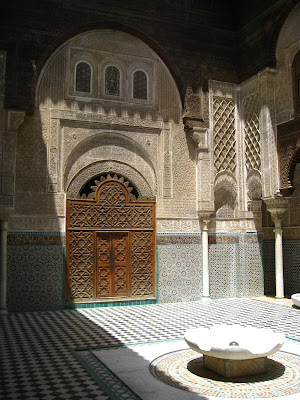When making arrangements to spend a four-week holiday Jordan
in July 2014 during the fasting month of Ramadan, I got more than a few
quizzical looks and questions: Isn't four weeks too long? Won't everything be
closed? Will it be safe? Won't it be unbearably hot? And so on and so on...
 |
| The Temple of Hercules in Amman |
The truth is that Jordan
is an amazing country which everyone should visit. Quite apart from the A-list
of tourist sites, notably Petra,
Wadi Rum, Jerash and the Dead Sea, Jordan
has a tremendous variety of attractions, ranging from ancient ruins and castles
to hiking and canyoning in breathtakingly beautiful nature reserves. Moreover,
the country's sprawling capital Amman
is also a well worth a few days' visit, whether to explore the Citadel, enjoy
the world's best falafel at Hashem Restaurant or relax in a trendy café on Rainbow
Street. And did I mention that there are few
places I've visited where I felt safer or more welcome.
 |
| Souvenir stall inside a tomb |
However, I do have one small complaint. The ancient Nabatean
city of Petra, a world heritage site which receives more than half a million
visitors each year, appears to be experiencing significant challenges related
to the effective management of the site. These include:
- The proliferation of shops and kiosks throughout the
property without any apparent regard for the physical impact on the site’s
temples and monuments. In some cases shops and kiosks have been established
within temples or ground in the vicinity of temples and monuments has been
levelled or otherwise physically altered to facilitate the construction of kiosks.
- Ubiquitous and often aggressive solicitation of visitors by
local community members for services such as donkey or camel rides or for the
purchase of souvenirs.
- Minimal control of the property exercised by authorities,
whose presence appears limited chiefly to access points to ensure that visitors
have purchased a ticket prior to entering the site.
I understand that these problems are linked to the
authorities' inability to address the aspirations and grievances of the local
Bedouin community, many of whose members were displaced from the area years ago
and now earn a living from visitors by selling trinkets, refreshments or animal
rides. In this regard Petra stands in contrast to the many other world
heritages sites I have visited around the world, including several in countries
facing development challenges even greater than those confronting Jordan.
 |
| Child hawking postcards near Petra's Royal Tombs |
I hope the Jordanian authorities take steps to address these
issues, both for the sake of the ruins themselves and the local population.














